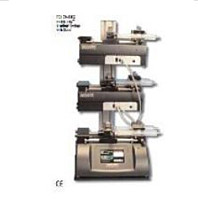Mechanism of Transdermal Drug Delivery by Electroporation
互联网
600
Human skin is a complex system, providing a formidable obstacle to drug delivery Fig. 1 ( 1 – 3 ). In particular, the stratum corneum (SC) is the primary barrier to transdermal drug delivery. The stratum corneum is made up of corneocytes, which are flattened remnants of cells, surrounded by lipid bilayer membranes ( 2 , 3 ). Because lipid-based structures tend to exclude charged species, the multilamellar arrangement acts as a “brick wall” ( 4 ) to prevent ionic and molecular transport.
Fig. 1. 1. Key features of skin, skin barriers ( 104 ) and hypothetical aqueous pathways. The stratum corneum (SC) is the dead outermost layer (≈ 20 μm hydrated thickness) that is the main barrier to transport, particularly for charged molecules ( 1 – 3 , 5 ). Appendages (sweat ducts and hair follicles) penetrate the SC, but are lined with a double cell layer with tight junctions ( 105 ), which prevents significant transport. Hypothetical transport sites are labeled: LV (low voltage): Iontophoresis involves transport through preexisting aqueous pathways associated with appendages or around corneocytes within the SC ( 7 , 8 , 53 , 55 , 106 ). MV (moderate voltage) pulses: A relatively fast (>10 ms) process of “macropore activation” is followed by cell lining electroporation, which is hypothesized to create new aqueous pathways at appendages (“appendageal electroporation”) ( 40 , 107 ). HV (high voltage) pulses: A very fast (<10 μs) process is hypothesized to involve a primary event of aqueous pathway creation based on electroporation of multilamellar lipid bilayers separating corneocytes ( 27 , 61 , 63 , 91 , 108 ), and secondary processes such as localized heating, or pathwayenlarging chemical introduction. Lower right: The original “brick wall model” of the SC (the largest area skin feature) intended to treat permeation of lipophilic molecules through the continuous “mortar” ( 4 ).









